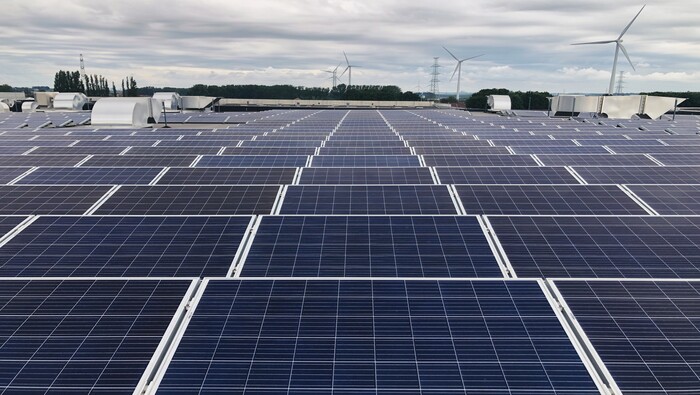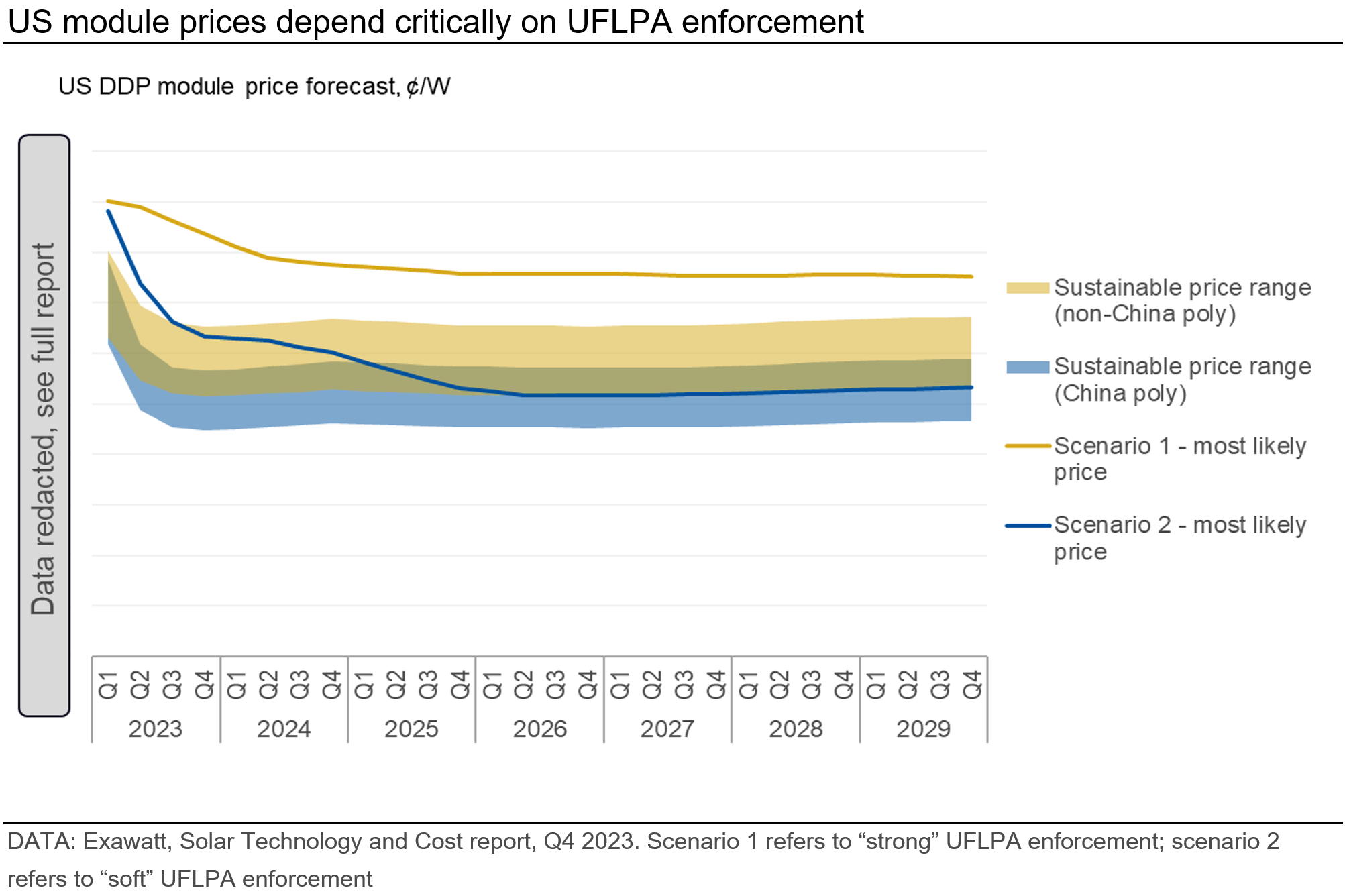Following detentions under the Uyghur Forced Labor Prevention Act (UFLPA), in November 2023 US Customs and Border Protection (CBP) reportedly released modules made using Chinese polysilicon into the US. While there is a long way to go to be sure that similar modules will pass smoothly into the country in the future, this is a promising signal for those hoping for a decline in US module prices in 2024.

Author Alex Barrows
Head of PV, Exawatt View profile
Reasons to be optimistic, but the road may be bumpy
Since the UFLPA was introduced, there have been numerous reports of PV module manufacturers attempting to use non-Xinjiang Chinese polysilicon (based on non-Xinjiang Chinese silicon metal and quartz) in their supply chains for US-destined modules. Undoubtedly, many of these modules entered the country without any detention and inspection. However, until recently there were no reports of these modules successfully clearing CBP detention.
In our Solar Technology and Cost (STAC) service we presented two possible pricing scenarios for the US:
- High prices based on “strong” UFLPA enforcement – increased detentions of smaller manufacturers, and no modules employing Xinjiang-free Chinese polysilicon reliably clearing CBP detention
- Lower prices based on “soft” UFLPA enforcement – limited detentions of manufacturers not detained so far, or modules employing Xinjiang-free Chinese polysilicon reliably clearing CBP detentions.
The potential for the market to go down one of these two scenarios (highly contrasting but both realistic) had already begun to cause a bifurcation of module price quotes in the US. There has been a growing split in prices between “safe bets” (manufacturers that had successfully navigated repeated CBP detentions, typcially using non-Chinese polysilicon from Wacker, Hemlock or OCI) and “others” (manufacturers that had yet to navigate detentions, and largely had not yet had shipments detained).
The situation currently remains somewhere between our scenarios, and in the Q4 report we warned that this could persist for some time – something that remains true. However, the apparent release of modules featuring Chinese polysilicon increases the likelihood that the market might trend to our second scenario. The road to that scenario is likely to be bumpy, with further detentions, further delays in modules being released into the US, and almost certainly some shipments being rejected due to documentation not achieving CBP approval.
Overall, we expect the recent news of successful module releases to drive up options for supply into the US, reduce the risk premium being charged by the manufacturers that have been considered safe bets, and push down manufacturing costs for US-destined modules. This will be driven both by allowing for greater use of (cheaper) Chinese polysilicon and by driving down the price premium for non-Chinese polysilicon.

High US import volumes will also put downwards pressure on prices
Before the recent module releases by CBP, US imports were already high, reaching ~17 GW in 2023 Q3 – a run rate of close to 70 GW per year, which is significantly above likely US installations of 30-35 GW per year in 2023 and 2024. This inventory build comes on top of reports of existing high inventory in the US residential market, and implies that further downwards pressure on US module pricing is likely in 2024.
We will be exploring this topic more and presenting our latest US module price forecasts in the 2024 Q1 Solar Technology and Cost report, due to be released in early January. Find out more at: Solar Technology and Cost (STAC) Service | CRU (crugroup.com)
Explore this topic with CRU
Author Alex Barrows
Head of PV, Exawatt View profile